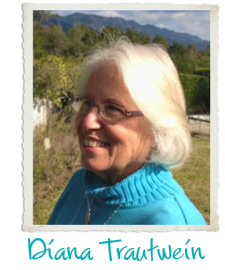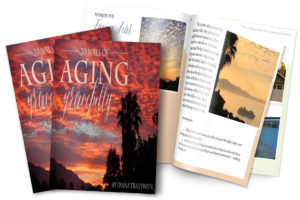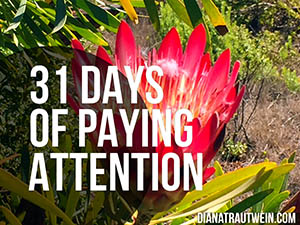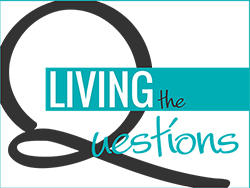

a place for pondering life, faith, family


“Our hypothesis leads us to the radical suggestion that the critical difference between the thinking of humans and of lower animals lies not in the existence of consciousness but in the capacity for complex processes outside of it.”
“Epistemology is the study of how we know what we know. Epistemological modesty is the knowledge of how little we know and can know. Epistemological modesty is an attitude toward life…built on the awareness that we don’t know ourselves. Most of what we think and believe is unavailable to conscious review. We are our own deepest mystery…And yet this humble attitude doesn’t necessarily produce passivity. Epistemological modesty is a disposition for action. The people with this disposition believe that wisdom begins with an awareness of our own ignorance…that there is no one method of solving problems…most of what [we] know accumulates through a long and arduous process of wandering…the wanderer endures uncertainty…possessing what John Keats called negative capability, the ability to be in ‘uncertainties, mysteries, doubts, without any irritable reaching after fact and reason.'” quotes taken from pages 245-248

Joining with Bonnie over at The Faith Barista today and with Emily for her last Imperfect Prose for a while as she and her family move into a challenging new phase of life with two new boys to love.

“From all eternity, Lord, you are.
The waters have lifted up, O Lord,
the waters have lifted up their voice,
the waters have lifted up their thunder.
Greater than the roar of mighty waters,
more glorious than the surgings of the sea,
The LORD is glorious on high.
Truly your decrees are to be trusted.
Holiness is fitting to your house,
O LORD, until the end of time.”
Psalm 93:2c-5
You have put into my heart a greater joy
I will lie down in peace and sleep comes at once.
Psalm 4:7-9, the Grail translation
(The book we are studying, in case you are joining in after the first two installments – which can be found on my blog here for the first segment, covering the introduction and the first 3 chapters, and here, for chapters 4-6, is David Brooks’ book, The Social Animal: the Hidden Sources of Love, Character and Achievement. The prime point of discussion begins with the wonderful writing and observations of Laura Boggess over at The High Calling. This was a birthday week for me, so I am very late in contributing to the discussion and, as a disclaimer, I must admit that I have not yet read any of the other blogs, including lovely Laura’s. That shall be remedied anon, I promise!)
Yes, it is Friday once again. Seems like it rolls around a little bit earlier each and every week. Lisa-Jo’s invitation still stands and now about 200 folks are signing in each week with their 5 minute, unscripted, unedited posts on the prompt of the day. Just writing, whether it’s ‘just right’ or not. So, in a minute, I’ll set the timer and see what comes. Try it – you’ll like it!
Prompt this week: TENDER
Go:
I paid attention when he spoke.
“Sit and look at the sea,” he said.
“Look a long time.
Look long enough to become
the sea looking back at you.
Then tell me what you see.
I think you’ll like it.”
So I went to the sea.
I sat in the sun,
high on a bluff.
And I looked long.
I looked wide.
I breathed slow,
and I moved slow,
and I was slow.
And here is what I saw.
Islands, off in the distance,
a low layer of fog
pushed up against them,
like the covers
in a bed just left.
Kelp beds, red and brown,
swaying with the tide,
housing life
deep down,
where I cannot see.
I know it’s there,
moving, feeding,
following the rhythm
of the water.
LIGHT,
sprinkled across
the surface of the sea,
light.
Dancing, winking,
blinking, blinding.
I see light.
And I am undone.
Mesmerized by the motion,
caught by the pattern.
One spot, shining bright.
Then two or three more,
then hundreds of them as
the wave reaches its zenith.
See that thread of molten silver
as the water breaks against
the sand!
For just the briefest of moments,
enough for a breath or two,
I know the sea,
I am the sea,
And I see myself as lovely.
Loved.
See for yourself: (and listen, too.)
We’re experiencing a winter heat-wave here on the central coast. It was nearly 80 degrees today, and beautifully clear. Somehow, my parking spot was perfectly situated to see these cascades of moving light as I sat and contemplated the magnificence of the sea. I watched for a little over an hour. I was actually anxious about trying this. Generally, I have a book to read, a lunch to eat, a nap to take when I park at the beach. Trying to imagine sitting and looking for a long stretch was hard to do. The actual doing of it? Divinely wonderful, amazing, restful, moving, sacred. I’ve been told that this experience can be replicated by choosing any natural location that is beautiful to you – your own back yard might work just fine. The point is to sit in contemplation for a long stretch of time – 1 to 2 hours. Finding the time is probably the biggest challenge – but I am now hoping to do this regularly and will make the time somehow.
 A retired-part-time-pastor-learning-to-be-a-spiritual-director with a family I adore sensing an increasingly urgent call to write-my-life-down, to preserve my sanity and create some space to breathe. Read my complete profile.
A retired-part-time-pastor-learning-to-be-a-spiritual-director with a family I adore sensing an increasingly urgent call to write-my-life-down, to preserve my sanity and create some space to breathe. Read my complete profile.Sign up for *More Wondering. . . * a monthly personal letter from Diana to you, available only to email subscribers. As thanks, receive a copy of Living the Questions, an 8-chapter ebook wrestling with some of the hard questions of life and faith.





Copyright © 2025 · Prose on Genesis Framework · WordPress · Log in